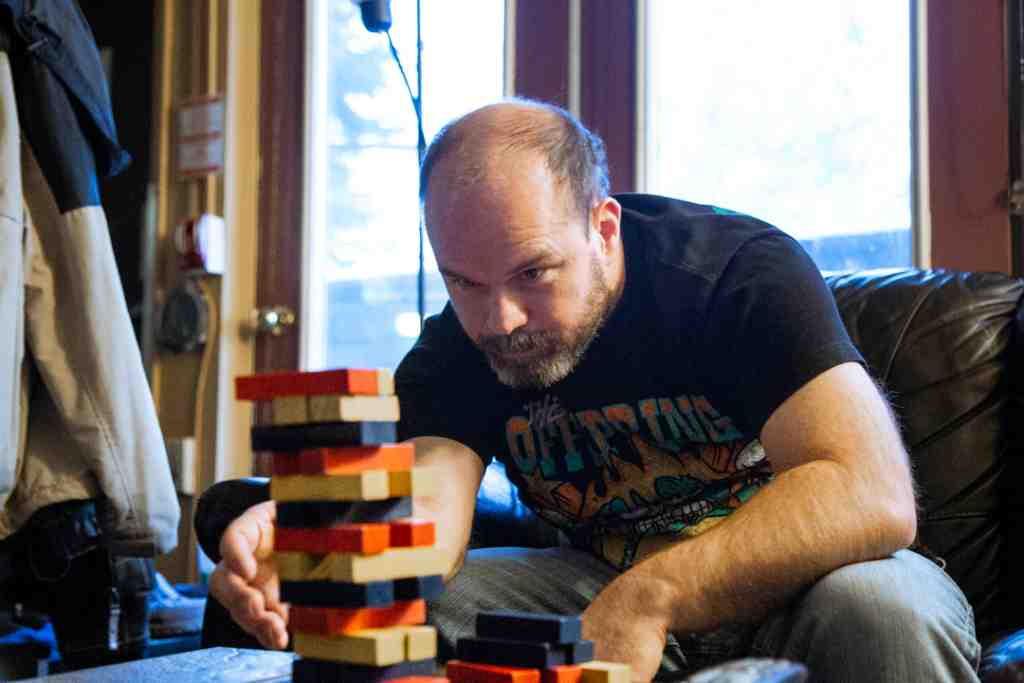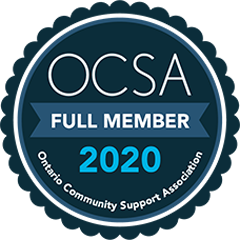Managing Problem Behaviours
What are "problem behaviours"?
- difficulty controlling anger
- acting impulsively without regard for the consequence
- acting inappropriately in social settings, causing conflict or avoidance in social relationships
- expressing emotions that do not fit the situation
- social withdrawal
- continuing to try to solve a problem in the same way, even if it did not work the first time
Why might a person with an acquired brain injury have a change in behaviour?
There can be many causes, some of which include:
- brain injury
- emotional distress (e.g., fear, confusion, difficulty adjusting to the injury)
- boredom, due to inability to participate in past activities both work and recreation, or inability to generate ideas
- fatigue
- hunger due to forgetting to eat or plan meals
- pain
- changes in personality
- medications or substance use, with altered sensitivity to these
The first step in dealing with problem behaviours is to try to understand them
This requires thinking like a scientist and gathering "data" about the behaviours. What is learned about the behaviour will help you determine how to change the behaviour. ABC's - Learn about the problem behaviour.
Antecedent:
What was going on just before the problem behaviour occurred? For example, in what situations are the behaviour problems expressed, what is the person doing, what are others doing, at what time of day?
Example: Joe had a routine morning and went shopping with his mother at the mall for clothes at 2 p.m. in the afternoon.
Behaviour:
The behaviour is a specific, observable action. It is best to describe what the person is doing and not interpret what they are doing.
Example: Joe started yelling and swearing after a half hour of shopping in a department store inside the mall (good description) vs. Joe was upset (poor description)
Consequences:
What happens after? What is the outcome of the behaviour?
Example: Joe demanded to go home. His mother drove him home and he immediately went to sleep.
To help with learning about the ABC's of the problem behaviour, record or keep track of the behaviour. Think about what, where, when, and for how long the problem behaviour occurs. Ask yourself if there is a pattern.
Example: After keeping a record of Joe's outbursts, it became apparent that Joe only had anger outbursts in the early afternoon, particularly if exposed to overly stimulating, busy environments (e.g., the mall).
Preventing problem behaviour is key
Some ways to do this include:
- Consistency - This is hard to do but it is very important to act consistently.
- Structure and Routine - Keep things simple and do things at the same time each day. This helps the person predict the day's events and know what to expect. If the routine is going to change, plan ahead and prepare the person for what is to happen...
- Repetition - The more a person does something, the easier it may become.
- Respect - Respect the individual with an injury and respect yourself. Set responsibilities appropriate to the person's capacity to carry them out with cueing or reminders or memory logs.
- Patience - Be patient with the person with an acquired brain injury and with yourself. Relationships and the roles within a relationship can change after an injury, temporarily or permanently. Be patient as you learn the new roles and the new ways of completing tasks.
Example: Joe did much better with controlling his anger when he consistently took a nap from 1-2 pm in the afternoon. This was a significant change in routine, since Joe never required naps before his brain injury.
Strategies to Manage Problem Behaviours
1. Environmental control
- Alter the environmental factors that affect the individual (e.g., lighting, seating, noise level, and who visits or the length of visit).
- Prevent overstimulation
Example: Joe had fewer outbursts when he was not exposed to highly stimulating environments - Introduce calming stimuli (e.g. soothing music if preferred, quiet spaces, comfortable seating, teach self-calming techniques).
Example: Joe learned to stand still, look at the floor, breathe slowly and deeply, and hold his arms to his chest for 15 seconds after being cued to take a rest break.
2. Modify task demands
Tasks might need to be simplified and made easier. Keep in mind the person's strengths and difficulties when modifying tasks.
Example: If Joe needed to go shopping, they found a quieter mall and he went during non-peak hours, such as first thing in the morning when there were fewer people/noise and he was rested.
3. Re-direct.
Sometimes it helps to distract the person by having them do a different activity, such as a task they enjoy. For example, you might start to sing, starting a different conversation, or have the person engage in a hobby.
Example: If Joe started yelling in the mall, a family member would immediately take him outside the mall to sit on the bench and practice deep breathing.
4. Behaviour Modification
- Positive Reinforcement (rewards).
- This can include activities that the person enjoys.
- This also includes social reinforcement such as positive attention, smiles, small talk, and acknowledgement. Some individuals respond best to visual cues such as posters and stickers marking "great" days on the calendar.
- Limited Choices. Providing the individual with numerous choices can be overwhelming and it may be difficult to make decisions. However, always making the decision for the individual can decrease the person's sense of independence and self worth. Providing the individual with a few choices allows for a balance between increasing the person's sense of self worth and independence while not overwhelming the individual.
Example: After he calmed down, Joe was given a choice to return to the mall without yelling or to go home. If the trip to the mall did not include any anger outbursts, there was always a stop at the outdoor park next to the mall, Joe's favourite place to rest and relax or watch the dogs playing.
5. Caregiver Communication
- Attend to (and possibly modify) the expectations, communication style, and knowledge of the caregiver.
- Redirect the person's attention.
- Provide limited choices.
- Discuss and set limits with the individual ahead of time and write them down if you need to. Let the person know what is expected of them in certain situations (i.e., what behaviour is acceptable and what is not and let them know why).
- Explain what you are doing and why.
- Provide immediate clear and concise feedback to the person. This includes positive feedback and corrective feedback.
- Provide genuine encouragement. Tasks and activities might be more difficult for the individual. Encourage the person in a genuine and respectful way.
- Back off and try again. As long as the person is safe, sometimes it is best to try the activity at a different time. Individuals with acquired brain injuries often feel better at certain times of the day, such as first thing in the morning or after a rest. Try engaging the person in a difficult or challenging activity during these times.
- Speak quietly and calmly and maintain a neutral physical stance. If your stress and agitation increases when the individual is engaging in problem behaviour, it is more likely that the situation will escalate. Modeling an appropriate emotional response and actions can help manage a problem situation.
- Identify signs of escalating distress. Signs of distress may vary from person to person. Some signs to look for include a confused or agitated facial expression, tensed muscles, crossed arms, or annoyance or frustration in the voice.
- Avoid confrontation and power struggles.
Example: Before an anger outburst in the mall, Joe had a wide-eyed look, his breathing became shallow, and he had difficulty focusing his attention. He was directed outside to sit on the bench for a few minutes and to focus on his breathing before an outburst occurred. His family member remained quiet for a period of time and then spoke to him in a calm and quiet voice and assured him that he had demonstrated good sense to leave when beginning to feel stressed, that many people have to leave the mall as they become bothered by the noise and activity.
Important Points to Remember
- Review how your strategies are working every once in a while and modify your plan if necessary.
- Watch for worsening of behaviour or other problem behaviours starting.
- Note successful interventions and add them to your collection.
- Recognize that if you change your behaviour the person might temporarily increase the problem behaviour. Stick with things and be consistent and the problem behaviour will decrease.
Community support
The Ottawa region is fortunate to have The Ottawa Hospital Rehabilitation Centre's (TOHRC) Acquired Brain Injury Care Stream provides a range of patient-centered care from the acute stage to the community. It delivers goal-oriented therapeutic assessment and intervention that address cognitive, behavioural, psychosocial and physical needs. The goal of the care stream is to maximize function in individuals with a brain injury.
For further information please go to: The Ottawa Hospital Rehabilitation Centre's Website
FOR PROFESSIONALS
Managing Problem Behaviours
Describes changes in the behaviour of a person with brain injury and strategies in dealing with such behaviour.
A Model for Community-based Services
Describes the 10 principles presented as an ideal model for community ABI programs.
Brain Injury and Substance Abuse
The Centre for Addiction and Mental Health (Toronto) and the Toronto Acquired Brain Injury Network developed this educational resource for providers working in the fields of Brain Injury and Substance Abuse.
Working with families
The most important word in dealing with families is collaboration. This article provides a number of suggestions for dealing with families of a person with brain injury.





